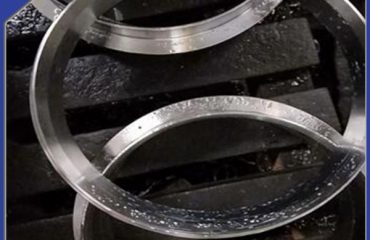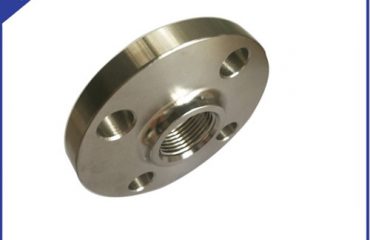Slip on flange is a flange that is connected to a container or pipe by fillet weld. It is an arbitrary flange. According to the degree of integrity of the connection between the flange ring and the straight cylinder section, the design is checked by the integral or loose flange respectively. Slip on flange not only saves space and reduces weight, but also ensures that no leakage occurs at the joint and has good sealing performance. The size of the compact flange is reduced by reducing the diameter of the seal, which will reduce the cross-section of the seal surface. Second, the stainless steel flange gasket has been replaced by the sealing ring to ensure that the seal faces the matching of the sealing surface. As the required pressure decreases, the size and number of bolts can be reduced accordingly, so a new product with small volume and light weight (70% — 80% less weight than the traditional flange) is finally designed. Flat welded flange is a kind of high quality flange product, which reduces the quality and space and plays an important role in industrial applications.
Slip on flange is suitable for pipe connection with nominal pressure not exceeding 2.5 MPa. Flat-welded flange can be made into smooth, convex and mortise-groove type. Flat-welded flange is widely used. It is mainly used in the case of mild medium conditions, such as low-pressure non-purified compressed air, low-pressure circulating water, its advantage is that the price is cheaper.
Advantages of stainless steel slip on flange: slip on flange not only saves space and reduces weight, but also ensures that the joint will not leak and has good sealing performance. The size of the compact flange is reduced by reducing the diameter of the seal, which will reduce the cross-section of the seal surface. Second, the flange gasket has been replaced by the sealing ring to ensure that the seal faces the matching of the sealing surface. As a result, only a small amount of pressure is needed to compress the sealing surface. As the required pressure decreases, the size and number of bolts can be reduced accordingly, so a new product with small volume and light weight (70% — 80% less weight than the traditional flange) is finally designed. Therefore, flat welding flange is a kind of high quality flange products, which reduces the quality and space, and plays an important role in industrial applications.
The main design drawback of slip on flange is that it can not guarantee no leakage. This is the shortcoming of its design: the connection is dynamic, and such as thermal expansion and fluctuating periodic load will cause the movement between the flange surface, affecting the function of the flange, so that the integrity of the flange is damaged, eventually leading to leakage. Any product can not be defective, but try to control the insufficiency of the product to the minimum, so the company in the production of flat welded flange as far as possible to improve the performance of the product, so that it plays a greater role.
Slip on flange sealing principle: two sealing surfaces of bolts squeeze each other flange gasket and form a seal, but also lead to seal damage. In order to maintain the seal, it is necessary to maintain the huge bolt force, so the bolts need to be bigger. The bigger bolts match the bigger nuts, which means bigger diameter bolts are needed to create conditions for the upper nut. However, the larger the bolt diameter, the applicable flange will become bent, the way is to increase the thickness of the carbon steel flange part. The entire device will require enormous size and weight, which is a particular problem in offshore environments, where weight is always a major concern. And, fundamentally, flat-welded flanges are ineffective seals that require 50% bolt load to extrude gaskets, and only 50% load to maintain pressure.
 Language
Language Espanol
Espanol English
English Italian
Italian عربى
عربى
 Skype: chinamaker99
Skype: chinamaker99  Tel: 86-316-5120812
Tel: 86-316-5120812 Email:
Email:  Whatsapp:
Whatsapp: 
